PKG Reducer Triple Branch Union — Technical Guide and Application Handbook
The PKG Reducer Triple Branch Union is a one-touch push-in pneumatic fitting engineered to provide rapid, reliable, and tool-free connections in compressed air systems. Designed for reduced-bore branch distribution, compact installations, and fast maintenance cycles, the PKG fitting family supports a broad set of metric and inch tubing sizes and common thread standards (PT/NPT). This article presents a comprehensive technical overview, specification tables, materials and build analysis, installation and maintenance guidance, application examples, comparison with alternative components, and selection criteria to help engineers, technicians, and system integrators specify and deploy PKG Reducer Triple Branch Unions effectively.
Introduction
Pneumatic systems are ubiquitous in factory automation, machine tooling, packaging, robotics, and process equipment. A common challenge across these domains is how to route compressed air safely and efficiently through confined spaces while enabling frequent rework or maintenance. The PKG Reducer Triple Branch Union addresses this requirement by combining a compact triple-branch geometry with a push-in (one-touch) interface that secures tubing without tools. Its reducer configuration allows interfacing between different tube outer diameters and threaded ports, making it well suited for distribution, branching, and local feed points in compressed air networks.
Technical Overview
At its core, the PKG Reducer Triple Branch Union is a three-branch pneumatic union that integrates:
- a primary threaded inlet/outlet port (PT, NPT or other thread standards),
- two or more push-in tube ports sized for common metric/inch tubing, and
- a push-release sleeve that enables tool-free disconnection.
The device is designed for air only (non-lubricated or lubricated compressed air) and provides service across typical industrial operating ranges: up to 150 psi (0–9.9 kgf/cm², 0–990 kPa), vacuum capability down to approximately -29.5 in Hg (-750 mm Hg), and standard ambient temperature operation from 32–140 °F (0–60 °C). The PKG naming convention uses a compact product code (for example, PKG 06 1/8) indicating model type, tube diameter (φD) and thread size.
Core Functional Features
- Push-in sealing: Secure tube insertion to the stop with automatic retention and O-ring sealing.
- Quick release: Depress the sleeve and withdraw the tube for immediate disconnection — no tools required.
- Reducer geometry: Accommodates different tube diameters and thread sizes for branch reduction or step-down distribution.
- PC type variants: Incorporate hexagonal internal and external surfaces to facilitate tightening in confined or restricted panel spaces.
- Thread sealing: Threaded parts are seal-coated (pre-applied sealant or compatible tape) to aid leak-free installation.
Specifications and Dimensions
Below are practical specification and dimension tables meant to assist selection and preliminary system design. Values are representative of typical PKG Reducer Triple Branch Union models and should be confirmed against manufacturer datasheets for final procurement and safety-critical installation.
General Operating Specifications
| Attribute | Value / Range |
|---|---|
| Intended medium | Compressed air only |
| Operating pressure | 0 to 150 psi (0 to 9.9 kgf/cm², 0 to 990 kPa) |
| Proof pressure (typical) | Up to 300 psi (manufacturer dependent — verify datasheet) |
| Vacuum capability | Down to −29.5 in Hg (approx. −750 mm Hg, ~10 Torr) |
| Operating temperature | 32–140 °F (0–60 °C) standard; extended-temperature variants may use alternative seal materials |
| Thread standards supported | PT (BSPP), NPT, and other regional thread types (model dependent) |
| Tube sizes (metric) | Ø4, Ø6, Ø8, Ø10, Ø12, Ø16 mm |
| Tube sizes (inch) | 5/32″, 3/16″, 1/4″, 5/16″, 3/8″, 1/2″ |
Representative Model Size & Dimension Table
This table provides nominal dimensions and approximate weights for common PKG reducer variants. Use these values for mounting clearance checks and BOM planning. For final mechanical design, obtain manufacturer CAD/drawing files.
| Model (example) | Tube Port(s) (φD) | Thread | Overall Length (L) | Width / Across Flats (W) | Thread Length (T) | Approx. Weight |
|---|---|---|---|---|---|---|
| PKG 04-1/8 | Ø4 mm | 1/8″ NPT | 28 mm | 16 mm | 7 mm | 10 g |
| PKG 06-1/8 | Ø6 mm | 1/8″ NPT | 31 mm | 18 mm | 7 mm | 14 g |
| PKG 08-1/4 | Ø8 mm | 1/4″ NPT | 36 mm | 22 mm | 9 mm | 22 g |
| PKG 10-3/8 | Ø10 mm | 3/8″ NPT | 44 mm | 26 mm | 10 mm | 30 g |
| PKG 12-1/2 | Ø12 mm | 1/2″ NPT | 52 mm | 30 mm | 12 mm | 45 g |
| PKG 16-1/2 | Ø16 mm | 1/2″ NPT | 60 mm | 36 mm | 12 mm | 60 g |
Notes: Dimensions above are representative and rounded to the nearest millimetre. Weight values are approximations for metal-bodied variants. Polymer-bodied versions will be lighter by 20–50% depending on material. Confirm exact dimensions with the component supplier before final installation.
Materials and Build Quality
Material selection for push-in pneumatic fittings balances weight, corrosion resistance, mechanical strength, chemical compatibility, and manufacturing cost. The PKG Reducer Triple Branch Union is typically offered in variants using a combination of the following materials:
- Body: Nickel-plated brass (common in industrial-grade fittings) or engineered thermoplastics such as POM (polyacetal) / PBT (polybutylene terephthalate) for lightweight, corrosion-resistant applications.
- Sleeve / Retainer: Stainless steel (spring-steel or stainless) for reliable tube gripping and long life in cyclic usage; some low-cost versions use brass or plated steel sleeves.
- Seals / O-rings: NBR (nitrile rubber) standard for general-purpose compressed air; FKM (Viton) or EPDM available for higher temperature or chemical resistance.
- Thread seal coating: Pre-applied PTFE-based thread sealant or manufacturer-specified sealant; threads may be machined with nominal tapers per standard (NPT) or parallel threads (PT / BSPP) depending on model.
- Plating / Finish: Nickel or chrome plating over brass bodies for improved corrosion resistance; polymer bodies typically offer UV-stabilized finishes.
From a build-quality perspective, the following design elements are worth noting:
- Precision-machined bores and sealing grooves to ensure consistent O-ring contact pressure and repeatable leak-tight performance.
- Hexagonal PC-type features (internal and external hex surfaces) to facilitate wrench engagement where space is limited.
- Stainless steel retention elements and robust sleeve construction to minimize wear during repeated connect/disconnect cycles.
- Quality control for thread sealing (pre-applied seal coat consistency) reduces the risk of assembly leaks and speeds installation.
Key Features
The PKG Reducer Triple Branch Union offers a set of features designed for efficiency in pneumatic system assembly and operation:
- One-touch push-in connection: Secure, immediate tube retention without ferrules or tools. Insert the tubing until it seats; release by depressing the sleeve.
- Tool-free disconnection: Service and reconfiguration time is significantly reduced — beneficial for test rigs, prototypes, and systems with high maintenance cycles.
- Reducer capability: Matches different tube diameters to threaded ports, enabling compact step-down or step-up branching without additional adapters.
- PC-type hex surfaces: Internal and external hex flats on select models make tightening in restricted spaces easier and reduce the need for additional adapters.
- Pre-coated threads: Threaded ports are seal-coated at manufacture to simplify assembly and lower leak risk.
- Wide tube compatibility: Supports both metric and inch tubing sizes across a broad range, which is useful in mixed-standard systems or global supply chains.
- Vacuum-capable: Suitable for negative-pressure line routing down to approximately −29.5 in Hg for light vacuum applications.
Use Cases and Applications
The PKG Reducer Triple Branch Union is suitable wherever compact, tool-free pneumatic branching is required. Typical sectors and use-case examples include:
- Factory automation: Distribution to parallel actuators and sensors on assembly lines where downtime recovery or fixture changes must be fast.
- Packaging equipment: Multiple small bore feeds to grippers, vacuum cups, or blow-off nozzles originating from a common threaded supply port.
- Robotics and end-of-arm tooling: Space-constrained mounting where reduced mass and compact routing help minimize added inertia.
- Machine tools: Localized air feeds for blow-off or cooling systems where periodic disassembly is required for tooling changes.
- Test rigs and lab automation: Rapid configuration of pneumatic circuits for test sequences and quick replacement during iterative development.
- Conveyor and material handling systems: Branching supply lines to sensors and valve islands distributed across tight frames.
- Maintenance-of-way and field service equipment: Portable fixtures or repair kits where tool-free reconnection speeds repairs.
Examples of specific installations:
- Feeding two Ø6 mm actuator lines from a local 1/8″ BSPP supply on a packaging head — using PKG 06-1/8 to provide two push-in outlets while threading directly into a manifold port.
- Converting a 1/2″ NPT supply to a trio of Ø12 mm flexible tubing branches for multiple blow-off nozzles using a larger PKG 12-1/2 reducer configuration.
- Supplying vacuum cups on a pick-and-place end effector using models rated for vacuum to assure low-leak connections while enabling rapid field tubing changes.
Selection Guide — How to Choose the Right PKG Reducer
Selecting the correct PKG Reducer Triple Branch Union requires evaluating system-level parameters and component-level attributes. Use the following checklist:
- Medium compatibility: Confirm the system uses compressed air only. These fittings are not rated for hydraulic oils, water, or aggressive chemicals unless specifically manufactured for such media.
- Pressure range: Ensure the maximum working pressure (up to 150 psi standard) fits the peak and surge pressures of your system including any transient spikes.
- Tube OD and wall thickness: Match the push-in port to the tube outer diameter. Ensure the tube ID/wall combination is compatible with gripping retention and intended flow.
- Thread type and size: Choose PT/BSPP vs NPT depending on your threaded port standard. Confirm thread taper/parallel and pre-applied sealant expectations.
- Temperature and seal material: Standard NBR seals cover typical temperature ranges. For elevated temperatures or certain lubricants, consider FKM/EPDM alternatives.
- Material and environment: For corrosive or outdoor installations, favor stainless-steel or polymer-bodied variants with UV and chemical resistance.
- Space constraints: Select PC-type hex models if you need to wrench the fitting in tight spaces. Confirm across-flats dimensions and thread lengths for clearance.
- Cycle life and maintenance frequency: Specify stainless retention sleeves and robust seals for high connect/disconnect cycles.
Comparison with Alternative Fittings
The choice of a PKG Reducer Triple Branch Union should be evaluated against alternative approaches such as standard push-in T-unions, barbed reducers, threaded T fittings, or quick-disconnect couplers. The table below summarizes relative attributes to help in decision making.
| Attribute | PKG Reducer Triple Branch Union | Standard Push-in T-Union | Threaded Metal T (machined) | Barbed Reducer (hose) | Quick-disconnect Coupler |
|---|---|---|---|---|---|
| Tool-free connection | Yes (push-in) | Yes | No (requires wrenches & sealant) | No (hose clamp required) | Yes (coupling action) |
| Reducer capability (different sizes) | Built-in (combination models) | Available but may require adapters | Yes (custom machined) | Yes (different barbs) | Not typically (standard sizes) |
| Space efficiency | High (compact) | Medium | Low (bulky) | Variable | Medium |
| Serviceability | High (tool-free) | High | Low (requires tools) | Low (hose clamps) | High (quick disconnect) |
| Leak-tightness (installation) | High when properly installed | High | Very high if threaded/sealed properly | Medium (clamps can slip) | High (designed for minimal leakage) |
| Durability / mechanical strength | High (metal versions) | Medium-High | Very high | Medium | High |
| Cost | Moderate | Low-Moderate | High | Low | Moderate-High |
| Best for | Compact branching, mixed-size connections, maintenance-heavy systems | Simple branching with same-size tubes | Permanent, high-pressure manifolding | Low-cost hose connections | Frequent connect/disconnect of modules |
Benefits and Limitations
Benefits
- Speed of assembly: Push-in connection reduces assembly labor and error potential relative to threaded joints or hose clamps.
- Reduced downtime: Tool-free disconnection enables faster maintenance and changeovers.
- Compactness: Reducer geometry and PC-type hex features save space in tight manifolds or machine frames.
- Versatility: Supports both metric and inch tubing and common threaded standards.
- Repeatable sealing: Engineered O-ring contact ensures consistent leak-tight performance across cycles.
Limitations
- Medium limitation: Designed for compressed air only. Not recommended for hydraulic fluids, aggressive chemicals, or oxygen service unless specifically qualified.
- Temperature restriction: Standard NBR seals limit continuous operation to about 60 °C; high-temperature versions require alternative seal materials.
- Mechanical loading: Push-in fittings are not meant to bear heavy axial mechanical loads; tubes should be supported near the fitting to avoid stress on the retention mechanism.
- Flow restrictions: The internal bore of reducer unions is typically smaller than full-bore manifolds; for high-flow main lines, use dedicated manifolding or larger bores to minimize pressure drop.
- Cyclic wear: Repeated connect/disconnect cycles will eventually wear sleeves and O-rings — select stainless or high-durability variants for intensive use.
Installation and Maintenance Guide
Proper installation and care extend service life, preserve leak-tightness, and ensure operator safety. The following section outlines professional best practices for mounting, commissioning, and maintaining PKG Reducer Triple Branch Unions.
Preparation and Safety
- Isolate and depressurize the line before installing or removing fittings. Verify zero pressure with a gauge downstream.
- Confirm compatibility of tubing materials (e.g., polyurethane, nylon, PTFE-lined) with the fitting’s seal materials and the ambient environment.
- Inspect tubing ends for square cuts and burrs. Chamfer and deburr as necessary to avoid damaging O-rings and to ensure proper seating.
- Check that threads and mating ports are clean and free of particulate debris or old sealant.
Installation Steps
- Identify the correct PKG model by matching tube OD and desired thread type/size (see product coding examples such as PKG 06-1/8).
- Hand-start the threaded port into the mating component. Use the designated wrench flats (or the PC-type hex if supplied) to tighten to the recommended torque. Do not overtighten; manufacturer torque specifications should be followed where available.
- If additional sealant is required, use an approved PTFE tape or thread sealant compatible with compressed air systems. Avoid excess sealant that may enter the pneumatic bore.
- Insert tubing: Push the tube firmly into the push-in port until it contacts the internal tube stop. A slight audible click or tactile stop is normal.
- Verify retention: Gently pull on the tubing to confirm the retention ring is engaged. For critical installations, add a safety tie or clamp to support tubing loads.
- Pressure-test the assembly at operating pressure to check for leaks. Use soapy water or approved leak-detection solutions; do not use open flame detection methods.
Maintenance Intervals and Procedures
- Periodic visual inspection: Inspect fittings monthly (or per maintenance schedule) for signs of corrosion, mechanical damage, or leakage.
- Seal replacement: Replace O-rings every 12–24 months in heavy-use environments, or immediately if leakage is observed. Use manufacturer-specified O-ring sizes and materials.
- Retention sleeve inspection: Check the sleeve and retention elements for deformation or wear after frequent connect/disconnect cycles. Replace worn sleeves to prevent accidental tube release.
- Tubing inspection: Examine tubing near push-in joints for kinking, abrasion, or chemical degradation. Replace tube segments showing damage rather than attempting repair.
- Thread integrity: Verify threaded connections remain tight. Re-torque to manufacturer recommendations after initial thermal cycling or vibration-heavy operations.
Troubleshooting Common Issues
- Leak at tube interface: Check that the tube is fully inserted to the stop and that the tube end is clean and square. Remove the tube and inspect the O-ring and tube for nicks. Replace O-ring if damaged.
- Thread leakage: De-pressurize, remove the fitting, clean threads, apply appropriate thread sealant, and reinstall to recommended torque.
- Tube not locking: Inspect the retention sleeve and collet teeth for deformation or contamination. Clean or replace the sleeve as required.
- Difficulty removing tube: Ensure system is depressurized. Depress the sleeve fully and twist the tube slightly while pulling. If persistent, check for internal debris or adhesive that may have bonded the tube to the O-ring.
Design Considerations — Minimizing Pressure Drop and Ensuring Reliability
When integrating PKG Reducer Triple Branch Unions into a pneumatic distribution network, follow these design practices:
- Avoid excessive series reductions: Each reducer introduces a pressure loss. Keep the number of sequential size reductions minimal to preserve system pressure at the point of use.
- Prefer full-bore supply trunks: Use larger diameter trunks (1/2″, 3/4″ or manifold rails) for long runs and use PKG reducers only for local branch distribution to actuators and valves.
- Support tubing: Securely clamp tubing near fittings to relieve axial loads on the push-in retention mechanism.
- Choose correct tube material: For vibration-prone environments, select flexible polyurethane tubing with abrasion resistance or nylon tubing for higher-pressure stability.
- Consider flow requirements: If high volumetric flow or fast actuation speed is required, validate the effective bore of the chosen PKG model and consider larger-bore fittings or dedicated manifolds.
Procurement and Part Coding
Part codes for the PKG family are structured to indicate the model, tubing diameter, and thread size. Examples:
- PKG 06-04 — PKG model with Ø6 mm tube port and 1/8″ thread (example)
- PKG 08-06 — PKG model with Ø8 mm tube port and compatible thread for a Ø6 (or specified) mating
- PKG 3/16-5/32 — Mixed inch sizes: 3/16″ tube to 5/32″ thread example
When ordering, specify:
- Model series: PKG (Reducer Triple Branch Union)
- Tube outer diameter (metric or inch)
- Thread type and size (PT / NPT / BSPP, etc.)
- Material variant (brass nickel-plated, polymer, stainless components)
- Seal material (NBR standard, FKM/EPDM optional)
- Any accessories (adhesive thread sealant, protective caps, or mounting brackets)
Typical Performance Examples and Engineering Notes
For preliminary engineering, use these conservative guidelines:
- Nominal port flow capacity is controlled by tube ID and the fitting’s internal bore. Short tubing runs from a PKG reduction to an actuator minimize pressure drop.
- At typical workshop pressures (6–8 bar / 87–116 psi), small-bore branches (Ø4–Ø6 mm) are suitable for small pneumatic cylinders, valves, and pilot lines. Larger lines (Ø10–Ø16 mm) are typically required for high-flow blow-off or large actuators.
- NPT-threaded models should be tightened to recommended torque values to achieve proper taper seal; over-tightening can distort threads and induce leaks.
Note: Manufacturers may publish Cv or flow coefficient charts for each model. Use manufacturer-supplied flow data to calculate expected pressure drop at design flow rates when precision is required.
Regulatory, Safety and Environmental Considerations
When deploying PKG Reducer Triple Branch Unions, account for the following:
- Compressed air safety: All installation and maintenance should follow local safety standards and the organization’s lockout/tagout procedures.
- Material handling: If fittings use nickel-plated components, be aware of nickel sensitivity issues in certain regulatory environments and in end-of-life disposal.
- Environmental exposure: Select corrosion-resistant materials for outdoor or corrosive environments (stainless body, EPDM seals where moisture/temperature cycles are extreme).
Case Study: Integrating PKG Reducer Triple Branch Unions in a Packaging Line
A packaging OEM needed to distribute compressed air from a 1/4″ supply running along a machine frame to multiple Ø6 mm actuator lines positioned across a compact sealing head. Key constraints included limited space, frequent maintenance access, and minimal downtime during tool changeovers.
Solution summary:
- Installed PKG 06-1/4 reducer unions at local supply nodes to branch the 1/4″ trunk into two Ø6 mm push-in outlets per node.
- Selected nickel-plated brass bodies with stainless retention sleeves to withstand frequent connect/disconnect cycles.
- Pre-applied thread sealing on PKG threads reduced assembly time and helped achieve zero-detectable leakage on pressure testing.
- Secured tubing with low-profile clamps adjacent to the fitting to reduce axial stress on the retention collets.
Result:
- Reduced maintenance time during tooling changes by an average of 45% due to tool-free disconnection.
- Preserved production uptime and simplified field replacement of branch components.
- Minimal leak incidence post-installation with the selected thread-sealed PKG components.
Frequently Asked Questions (FAQ)
Can PKG Reducer Triple Branch Unions be used for liquids?
These fittings are designed and specified for compressed air applications. Using them with liquids can lead to seal incompatibility, altered retention characteristics, and unreliable performance. Consult the manufacturer for variants rated for liquids if required.
What tubing materials are compatible?
Common compatible tubing includes polyurethane (PU), nylon (PA), and polyethylene (PE) for general pneumatic applications. Ensure tube outer diameter and wall thickness conform to the fitting’s retention capability. For high-temperature or chemically aggressive environments, confirm compatibility with the seal material (NBR, EPDM, FKM, etc.).
How many connect/disconnect cycles can a PKG fitting endure?
Service life depends on material variant, environmental conditions, and operator technique. Metal-bodied units with stainless retention sleeves and NBR seals typically achieve thousands of cycles. Polymer-bodied versions may have lower cycle life. For frequent cycling, choose the highest-durability variant and schedule periodic seal inspection/replacement.
Is PTFE tape allowed when installing PKG thread ports?
Use PTFE tape or compatible thread sealants where appropriate; however, be careful to prevent excess tape from entering the pneumatic bore. Many PKG models are supplied with pre-applied sealing coat, and additional sealing may not be necessary. Follow the manufacturer’s recommendations.
Conclusion
The PKG Reducer Triple Branch Union is a versatile, compact, and maintenance-friendly solution for branching pneumatic lines in compressed air systems. With one-touch push-in functionality, reducer geometry to match different tube sizes, and PC-type hex features for confined spaces, this fitting addresses a common set of industrial requirements: fast assembly, reliable sealing, and convenient servicing. While not suitable for liquids or extreme temperature ranges without specific options, the PKG family is an excellent choice for automation, packaging, robotics, and general pneumatic distribution when deployed in accordance with manufacturer specifications and good pneumatic design practice.
For final selection and procurement, confirm the exact model dimensions, material options, and performance data with the manufacturer’s product datasheet and CAD files. This ensures the selected PKG Reducer Triple Branch Union precisely fits your operational requirements and installation constraints.
If you would like, I can generate a printable specification checklist or a selection matrix tailored to your particular system pressures, tube materials, and spatial constraints.

 Tiếng Việt
Tiếng Việt
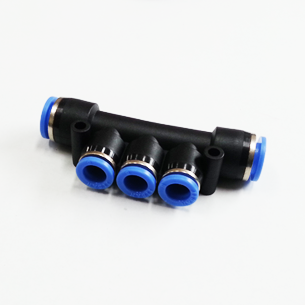
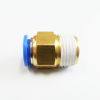
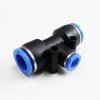

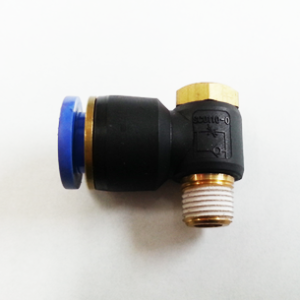
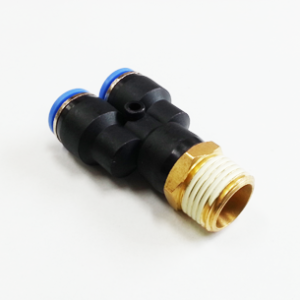
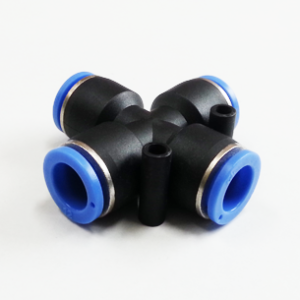
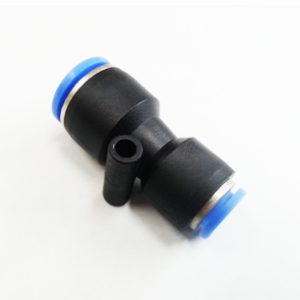
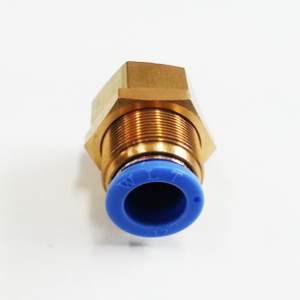
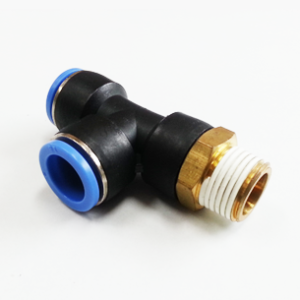
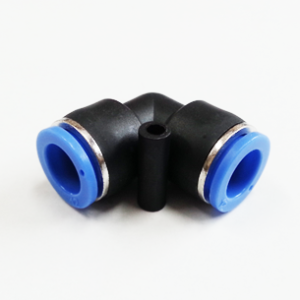
Reviews
There are no reviews yet.